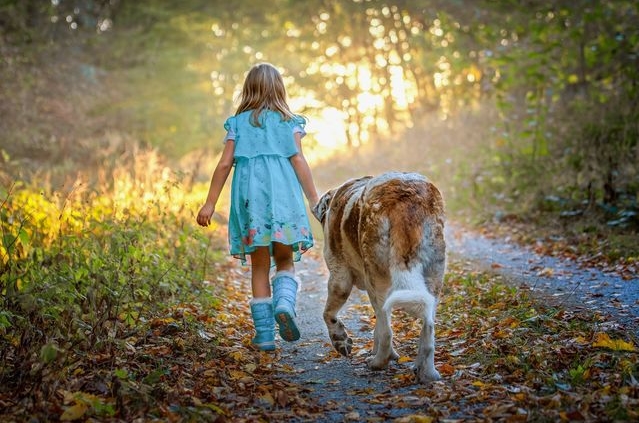Being Brave for Bailey: Children and the Death of Their Pets
When it comes to facing the death of our pets, many people struggle to know how to cope. How do we face making such a difficult decision such as euthanasia? How do we take care of ourselves afterward? Even more so, how can we help children understand pet loss and a way that focuses on healthy grieving?
Last year, I published an article, Support, Nurture & Love: Talking to Children About Pet Loss, which highlights important aspects of discussion about pet loss and illness with children. One way to help children understand and normalize death, whether it was sudden and tragic or due to the onset of illness or old age, is to read to them. Children learn immensely through play and reading.
A fellow Psychology Today contributor, Peter Gray, Ph.D., highlights in their article, “Stories provide a simplified simulation world that helps us make sense of and learn to navigate our complex real world” and continues with, “The aspects of our real world that are usually most challenging, most crucial for us to understand, are social aspects.”
I had the honor of interviewing Dr. Corey Gut, who has turned to write children’s books to help children understand the death of their pets and how they got started in this journey.
1. If you could please take a moment to introduce yourself to the readers so they know a bit more about you?
I live in a small suburb of Detroit, Michigan with my husband, my 2-legged daughters, Addison (9 years old) and Ashley (7 years old), and my 4-legged sons, Vinnie (a 12-year-old Lab mixed breed) and Derby (a 3-year-old Lab/Hound mixed breed).
I’m a veterinarian in Bloomfield Hills, Michigan. I grew up in a family of animal lovers. My mom had a wildlife rehabilitation license, so in addition to many pet dogs, cats, birds, hamsters, gerbils, mice, lizards, and guinea pigs, we also occasionally had an orphaned raccoon or opossum. Working with animals is in my genes!
When I’m not working, I love spending time with friends and family, practicing yoga, writing, and spending time outdoors.

2. How is it you came to start writing Children’s Books focused on Pet Loss?
Parents have asked me thousands of times over the last 14 years for resources for their children when they are facing the death of a family pet. Since there was not a resource available to fit their needs, I decided to create one myself.
“Being Brave for Bailey” was my first book and I wrote it for my niece, Lexie when I diagnosed liver cancer in her dog, Bailey. The book was so helpful that we decided to publish it. Shortly after that, we got tons of requests from teachers, librarians, and parents for a kitty version, and that’s when I wrote “Staying Strong for Smokey.”
3. What is the reaction when you tell people what you’re working on?
Everyone has been incredibly supportive. The most common reaction I get is, “I wish I had this book when my kids went through this!” Pet loss and children is an area that really needs more attention. It’s such a huge event in a child’s life and how it’s handled can really affect them and the way they handle both love and loss in the future.

4. What’s the hardest part about writing these Children’s Books?
The hardest part is knowing every time I inscribe and ship a book, that means that someone has lost their best friend. It’s heartbreaking.
5. Where can people buy your books, and where can people find out more about you?
The best place to purchase books is online at www.beingbraveforbailey.com. These can be inscribed, dedicated, or even donated to a library, school, or church in a pet’s name. Additionally, they are available at my vet hospital, DePorre Veterinary Hospital in Bloomfield Hills, and various other stores in the community.
6. What’s your biggest piece of advice with supporting children through pet loss?
Let them be involved, even if only in a small way. Age needs to be taken into consideration when deciding in what ways to involve children, but there are always ways to make them feel a part of things. Helping kids through the process by letting them make some decisions helps the child process everything in a healthy way instead of feeling like this awful experience is happening to them. Let them pick out a tree to plant in their pet’s honor. Have them draw a picture for their pet or write a letter to their pet. Make a memory box and let them pick out what to put in it. Older children can even be involved in the euthanasia process and decisions on cremation, burial sites, etc. Involving the children even in a small way will mean the world to them and will give them a healthy way to begin to work their way through their emotions as they grieve.
One last thing. It’s okay to let your kids see you cry. This is hard. And it’s supposed to be. Show them it’s ok to be emotional and that you are sad too. It’s very healthy.
Adam Clark, LCSW, AASW is a published writer, educator, and adjunct professor at the University of Denver’s Graduate School of Social Work. Adam is the founder of the Pet Loss Education Project, and focuses his work on the psychology behind the human-animal bond, specializing in endings and transitions. He is passionate about reducing the cultural stigma associated with pet loss, supporting pet owners, and educating veterinary professionals. Additional information on Adam and his current projects can be found at www.petlosseducation.com, or he can best be reached at adam@lovelosstransition.com




